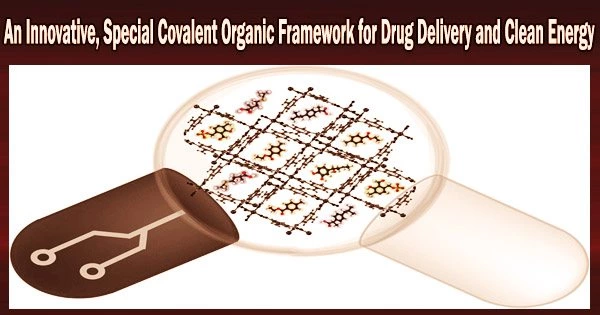Innovative materials with special, adaptable qualities are essential in our search for sustainable energy and health solutions. They include a new type of porous solids known as three-dimensional (3D) covalent organic frameworks (COFs), which have attracted a lot of interest due to their potential use in biomedicine, semiconductivity, proton conduction, catalysis, and separation.
These materials are now both in their synthesis and in their intended uses. To create crystalline, extended, net-like, three-dimensional reticular structures, strong covalent bonds were used to join molecular building blocks to create 3D COFs, which are porous organic materials.
The synthesis of 3D COFs from pre-designed building pieces resulting to “network topologies” or net-like “reticular” arrangements of constituent elements is still difficult. The lack of 3D building units and the insufficient reversibility of the linkages between the building components are to blame for this.
Recently, Professor Yuichi Negishi from the Department of Applied Chemistry, Faculty of Science, Tokyo University of Science, Japan, and his colleagues in the Department of Applied Chemistry, Tokyo University of Science, Dr. Saikat Das, Mr. Taishu Sekine, and Ms. Haruna Mabuchi have succeeded for the first time in creating a novel 3D COF unique networked topology.
“In this study, we have succeeded for the first time in creating a 3D COF with scu-c topology (network structure) by connecting nodes of a regular plane (4-connected) with nodes of a regular prism (8-connected). This new COF, i.e., TUS-84, has a double interpenetrating structure with well-defined voids,” says Prof. Negishi. The study has been published in ACS Applied Materials & Interfaces in volume 14 issue 42 of the journal on October 17, 2022.
In order to produce 3D COF with a scu-c net-like arrangement of elements, the researchers conducted a condensation process of two organic linkers, DPTB-Me and TAPP, with various symmetries.
In this study, we have succeeded for the first time in creating a 3D COF with scu-c topology (network structure) by connecting nodes of a regular plane (4-connected) with nodes of a regular prism (8-connected). This new COF, i.e., TUS-84, has a double interpenetrating structure with well-defined voids.
Professor Yuichi Negishi
The scientists next used high-resolution transmission electron microscopy (HRTEM) and powder x-ray diffraction (PXRD) to examine the 3D COF’s crystal structure and characteristics. Additionally, the researchers performed structural modeling and simulation, which demonstrated excellent agreement with the experimentally reported features while also revealing additional structural insights.
The researchers also showed that the synthetic 3D COF has outstanding hydrogen, carbon dioxide, and methane adsorption capabilities, which increases the material’s potential for use in carbon capture and renewable energy applications.
As Prof. Negishi notes, “The development of appropriate COFs also facilitates the recovery of metal resources and noble gases, such as argon, in an energy-efficient way. This contributes to the improvement of resource and energy problems.”
This innovative 3D COF’s effectiveness in medication delivery applications is the cherry on top. Using ibuprofen, a typical nonsteroidal anti-inflammatory medicine, the team demonstrated TUS-84’s drug delivery capabilities with effective drug loading and sustained release patterns.
After 5 days, TUS-84 demonstrated a prolonged drug release performance of roughly 35%. This makes it easier to give medicine at sustained concentrations for a long time. As a result, dose frequency might be decreased and long-lasting, and chronic pain might be controlled more consistently.
The results of this work open the door to the creation of future 3D COFs with distinctive topologies for use in a variety of industries, from medicine to environmental cleanup.





